Thymoma pathophysiology
|
Thymoma Microchapters |
|
Diagnosis |
|---|
|
Case Studies |
|
Thymoma pathophysiology On the Web |
|
American Roentgen Ray Society Images of Thymoma pathophysiology |
|
Risk calculators and risk factors for Thymoma pathophysiology |
Editor-In-Chief: C. Michael Gibson, M.S., M.D. [1]; Associate Editor(s)-in-Chief: Amr Marawan, M.D. [2] Ahmad Al Maradni, M.D. [3]
Overview
On gross pathology, well circumscribed mass, that is locally invasive is a characteristic finding of thymoma. On gross pathology, well circumscribed mass, that is locally invasive is a characteristic finding of thymoma.
Pathophysiology
Microscopic Pathology
On microscopic histopathological analysis, round cells, with ample vacuolated cytoplasms, and fat droplets are characteristic findings of thymoma.
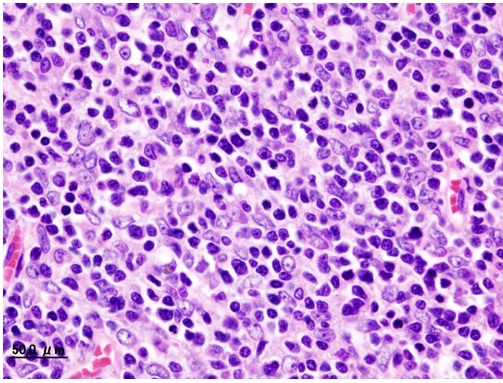 |
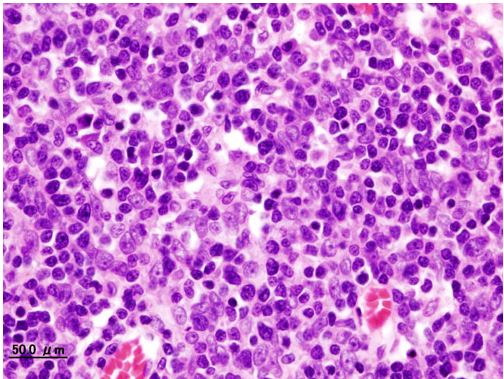 |
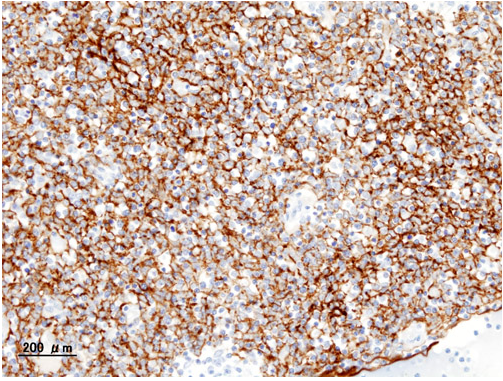 |
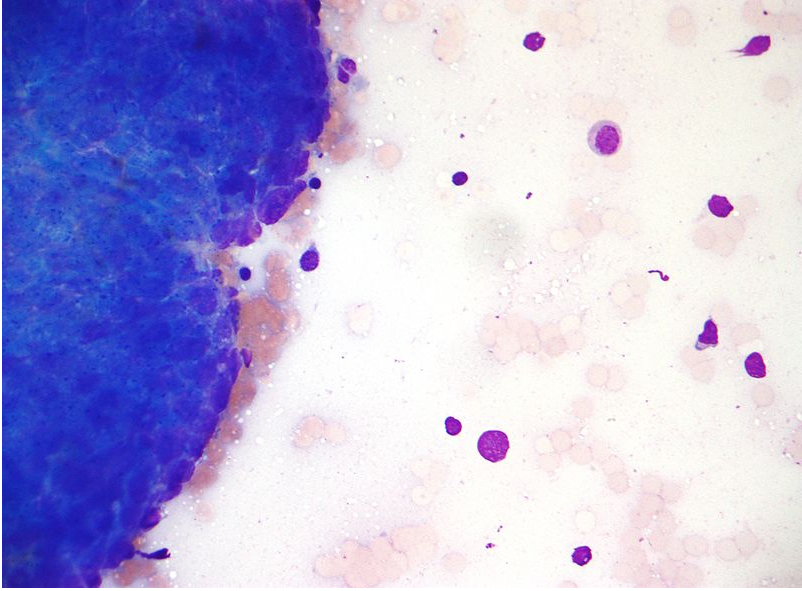 |
Gross Pathology
On gross pathology, well circumscribed mass, that is locally invasive is a characteristic finding of thymoma.
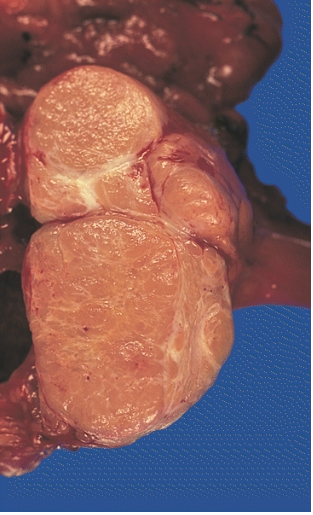 |
Genetic Features
Genetic alterations reported for the different WHO histological thymoma subtypes[1]
| WHO Type | Chromosomal Gains | Chromosomal Losses |
| Type A | none | -6p |
| Type AB | none | -5q21-22,-6q,-12p,-16q |
| Type B3 | +1q | -6,-13q |
Associated Disorders
A third of the patients who have a thymoma detected because they have an associated autoimmune disorder. The most common condition in this group is myasthenia gravis (of which 25-50% are associated with a thymoma); patients with myasthenia are routinely screened for thymoma. Other associated autoimmune conditions are pure red cell aplasia and Good's syndrome (thymoma with combined immunodeficiency and hypoimmunoglobulinemia G). Rare associations that have been reported are: acute pericarditis, Addison's disease, agranulocytosis, alopecia areata, ulcerative colitis, Cushing's disease, hemolytic anemia, limbic encephalopathy, myocarditis, nephrotic syndrome, panhypopituitarism, pernicious anemia, polymyositis, rheumatoid arthritis, sarcoidosis, scleroderma, sensorimotor radiculopathy, stiff person syndrome, systemic lupus erythematosus and thyroiditis.[2]
References
- ↑ "http://www.iarc.fr/en/publications/pdfs-online/pat-gen/bb10/BB10.pdf" (PDF). Retrieved 26 February 2014. External link in
|title=(help) - ↑ Thomas CR, Wright CD, Loehrer PJ (1999). "Thymoma: state of the art". Journal of Clinical Oncology : Official Journal of the American Society of Clinical Oncology. 17 (7): 2280–9. PMID 10561285. Retrieved 2012-01-18. Unknown parameter
|month=ignored (help)